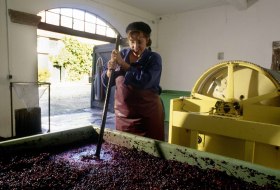
searchMenu



The maturation describes the time between fermenttion and bottling of the wine. it already is a wine after fermentation, but it is not yet drinkable. The ripening process is nothing more than the storage of the wine under controlled supply of oxygen. This can be done in wooden barrels (oxidative removal) or in stainless steel (reductive removal).

"BSA" is the German abbreviation for malolactic fermentation (MLF). It is a process that happens during or after alcoholic fermentation . At a temperature of about 20°C, the process is started naturally or by bacteria, that is added. During the MLF, malic acid, a pointed and spicy acid, is turned into the softer lactic acid. A by product is carbonic acid.

Not an actual wine market, but the oldest wine and folk festival of a city by the Rhine. Right from the start, it was not only about Rheinhessen wine, but about wines from other wine groing areas, too. Last weekend August to first weekend September in Mainzer Volkspark.

The crushed grapes from which the juice is then squeezed out. The German expression "Maische" comes from middle high German "Meisch" and means "mixture" (Latin miscere = mix).

From lat. "mustum". The juice obtained from fresh grapes by pressing. It is fermented into wine. A partially fermented must first is called Bremser and then Federweißer .

Sugar content of grape must, measured in degrees Oechsle. The "natural alcohol content" can be calculated from the must weight. This is determined by the winemaker with a must scale or a refractometer.